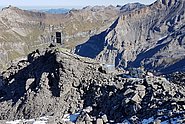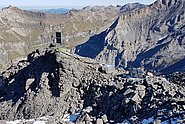Anthropogenic climate change is rapidly altering high mountain environments, including changing the frequency, dynamic behavior, location, and magnitude of alpine mass movements. Here, we review three decades of scientific literature (1995 to early 2024) to assess to what degree observational records from the European Alps – as the region with the most comprehensive records – reveal these changes. We do this for the processes that are most common in this region, namely rockfall, rock avalanches, debris flows, ice avalanches, and snow avalanches. The systematic literature search and review yielded 335 publications, of which we omitted publications that did not focus primarily on observational records. The remaining 103 publications used observations from over 100 sites and 30 inventories to investigate the connection between climate change and mass movements. About one third of the relevant studies found a measurable impact of climate change on the investigated alpine mass movement processes (with the exception of large rock avalanches). The clearest climate-controlled trends are (i) increased rockfall frequency in high-alpine areas due to higher temperatures, (ii) fewer and smaller snow avalanches due to scarcer snow conditions at low and mid elevations, and (iii) a shift towards avalanches with more wet snow and fewer powder clouds. While there is (iv) despite a clear increase in debris-flow triggering precipitation, debris-flow activity has not been found to uniformly increase, though there is some evidence for increasing activity above treeline and at locations without historical precedence. The trends for (v) ice avalanches are spatially very variable with no clear direction. Ice temperatures are measurably increasing, but – despite a theoretical expectation – this has not impacted ice avalanche activity to date. The reviewed literature also reveals that quantifying the impact of climate change on these mass movements remains difficult in part due to the complexities of the natural system, but also because of limitations in the available datasets, confounding effects, and existing statistical processing techniques. Better assessments could be achieved if we would more broadly support the compilation and maintenance of large standardized data catalogs, bring together various dispersed datasets (in said catalogs), including from social and citizen science projects, invest in long-term natural observatories, and develop suitable processing techniques. Better observations will additionally support the development and performance of process-based models. If we can advance natural hazard research on these fronts, more quantitative predictions of future change are well within our reach.
See DOISee Institutional Repository DORA


